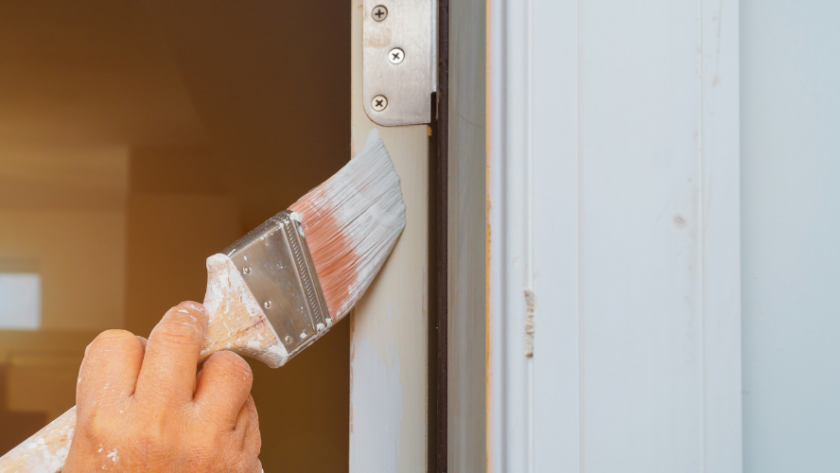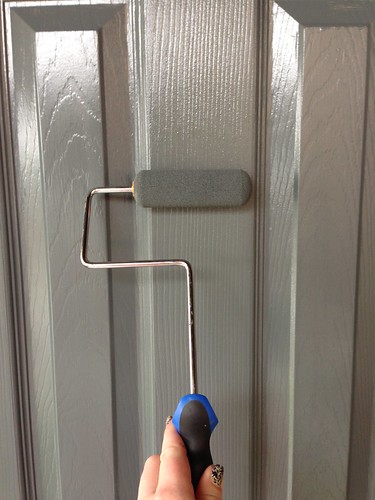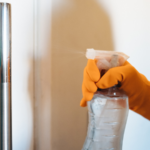Repainting an internal door is a great way to breathe a new lease of life into old, worn looking interior woodwork. The key to achieving an attractive and successful paint job is to prepare the new door carefully and take your time with each stage. Approaching the paint job systematically will ensure that it comes out looking as smooth and attractive as possible.
Tools You Will Need
- Electric sander and sandpaper
- Sponge
- Clean cloth
- Paint brushes and a paint roller
- Primer
- Paint (or wood stain)
- Dust sheets
- Masking tape
- Bucket
- Wood filler
Time Required:
Allocate a full day for this task.
Preparing the Door
If it is possible to do so, remove the door from the frame before you start work. This makes it much easier to achieve a clean and polished finish. Lay a dust sheet under your working area, and remove any door handles or other fixings. If you must paint with the door still on the hinges, use a combination of dust sheets and masking tape to protect any areas that you don’t want to drip paint on.
Before you repaint the door you will need to sand it to give the new paint something to adhere to. You don’t need to strip all of the original paint off the door, just roughen the surface slightly so that the new coat of paint sticks. After sanding the door, wipe it down with a damp cloth to remove any dust and dirt, and then wipe the surface dry. Carefully inspect the door and if there are any scratches or dents, fill them in with wood filler.
Depending on the colour and type of paint you want to use, you may need to apply a primer to the door. Using a primer is particularly important if you are planning on painting the door with a paint that is lighter than the existing colour, if you are painting a bare surface, or if the original coat of paint was oil based and you plan on using a latex paint for the fresh coat.
If you decide to use primer, apply the primer using the directions given in the next section, let the primer coat dry and then apply a coat of normal paint.
Painting the Door
When you are painting the door, dip the paintbrush into the paint so that the top couple of inches of bristles are submerged in the paint, then gently drag the paint brush out over the lip of the paint can. This will remove excess paint from the brush so that the brush holds lots of paint, but there is not so much excess paint that it drips or runs.
If you are painting a panelled door, use a small roller to paint the raised panels first, then fill in the indents in the sides using a paint brush. Follow the direction of the wood grain at all times, and paint in smooth, gentle strokes. Finish the job by painting the cross pieces.
Allow the top coat to dry and then inspect the door. If necessary, apply a second coat.
Conclusion
Allow half an hour to an hour drying time between coats, and wait for at least two hours before handling the door to flip it over and repaint the other side. Painting a door is a slow and painstaking process, but if you take your time over it you will have a beautiful looking piece of woodwork to show for your efforts.
Image Source: http://www.flickr.com/photos/emilysnuffer/






